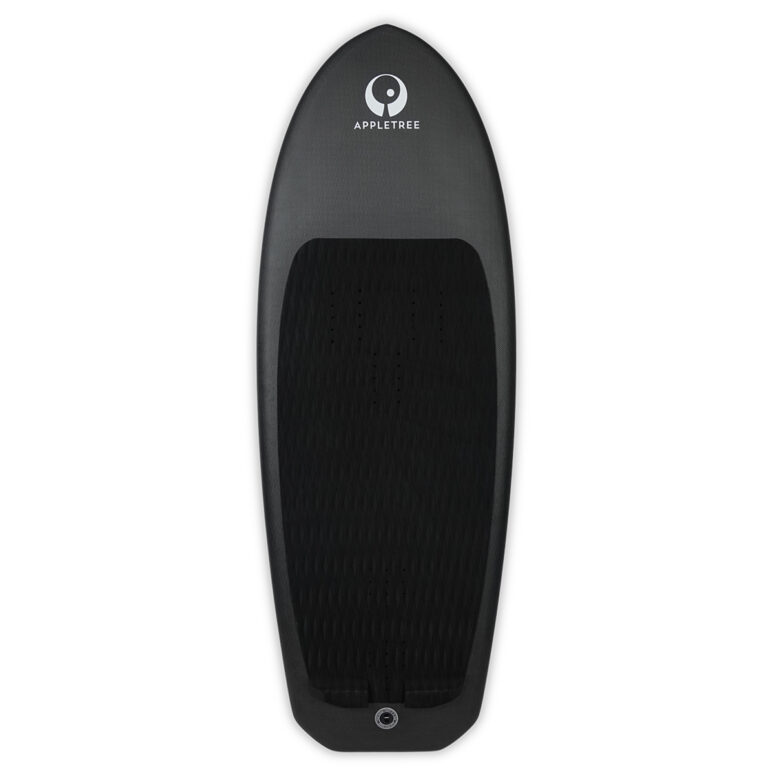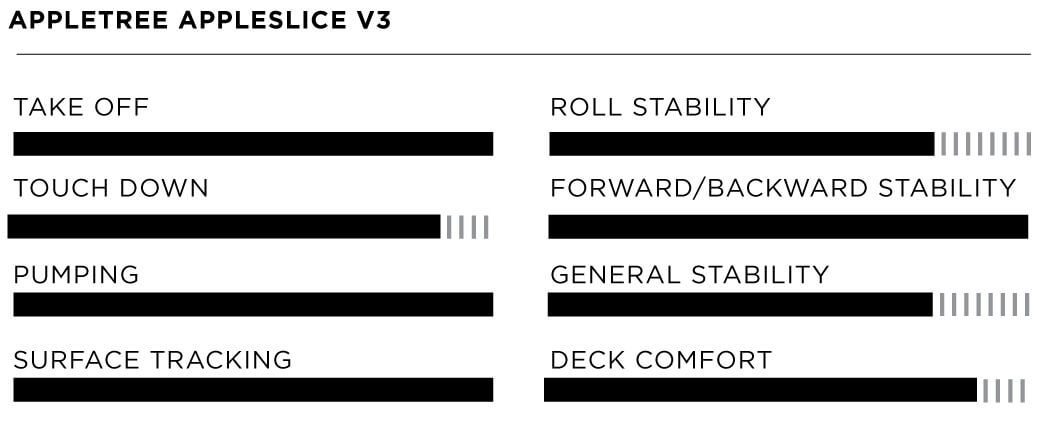

When you purchase gear through links on our site, we may earn a small commission. Here’s why you can trust our tests and our affiliate partner.

For products to be entering their third incarnation in the fledgling sport of wingfoiling signifies a maturing market, and the Appleslice V3 is a prime example of how far we’ve come in a short space of time. The ‘slice has always pitched itself as the allrounder from Appletree with versatility across disciplines and water states at the forefront of the design intention. Seven sizes have come to fruition starting at 40l through to 100l. We’ve come a long way from the boxy first version.
“So what’s changed from the version 2?” I hear you query with enthusiasm. The Slice has had quite a chiseling for this incarnation. With the influence and benefits of the downwind board designs we’ve seen over the last twelve months or so, some of the design characteristics have crept across into freeride boards, and in this case the outline has become a little narrower and longer, with our 80l test board now four inches longer than the previous equivalent 83l board and an inch narrower. The now well-proven Appletree construction remains true to form on the new models, with closed cell foam wrapped in a carbon-infused shell with a super honest lamination. All manner of custom options are available as well, with resin dips, swirls and graphics available on request from the Portuguese factory.
Shape-wise the nose has become far more pointed and assertive, with a pronounced central spine running down first third of the hull, which flattens out under the standing area. This extra length, narrowness and bottom contour noticeably aid surface tracking; as soon as you’re stood up the board wants to shoot forward and plane, far more eagerly than you’d expect. In choppy conditions where you sometimes struggle to make board speed if underpowered, this is a huge benefit of the new design over the old one. From a surface stability perspective, a similar level remains – where you’ve lost a little width, you’ve gained a fair amount of length. The rail shape has also changed dramatically with a far more pronounced and shaped rail chine running almost all the way onto the nose giving it a speedboat-like appearance. The rear of the deck has a smooth sloped angle to it, which carries over from the previous version that makes sliding yourself on and off the back a dream. Under this the tail shape is angled back in the planform and sports a super sharp 90-degree release in the rear, which is probably only achievable with the vacuum infusion process. Self-tapping inserts are present in a Y configuration. There are several options to trim fore and aft here, so combine that with the long foil box and it’s going to be dead easy to find a favorable position for the strapped rider. An extra-long forward biased foil box has been implemented which will accommodate a broad range of foils, and a carry handle sits well balanced just in front. The deck pad is thin and tactile underfoot with a well-placed kick in the tail, which we found we used a lot for locating the rear foot.
Another carry over from the previous board is the deck dugout, which aligns with the foil box perfectly to give you a flat flatform, enhancing comfort and control and a level playing field to trim your foil against if necessary. An NFC datatag is laminated into in the leash point to allow you to assign your details into it.
In the water the most noticeable immediate change is the takeoff. This board shoots forward in a straight line, builds speed quickly, and slithers out of the water far more rapidly than its predecessor. The narrowness and new rail shape also lets you make a tighter turn on the wave with less chance of catching a rail. As with all boards in this premium construction, the foil feel is translated extremely well to your feet, so you can really feel when you’re at the limit. There’s also the added bonus of being a great shape for a foil assist too, if that’s on your agenda.
The Appleslice V3 is another premium piece of carbon art from Appletree, partnering itself with modern high-performance foils and making the smaller front wing sizes all the more accessible to the average rider. It’s a tool for progression in all disciplines, and ideal as a first step down board to something just sub bodyweight and a prime example of a brand with their own production facility having the agility to keep one step ahead of the curve.
